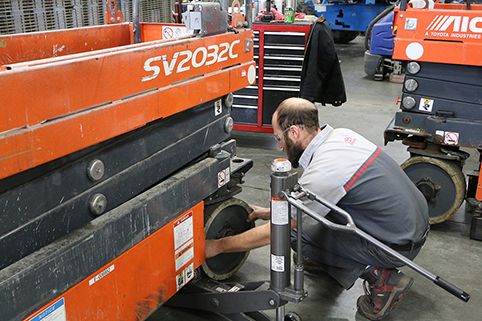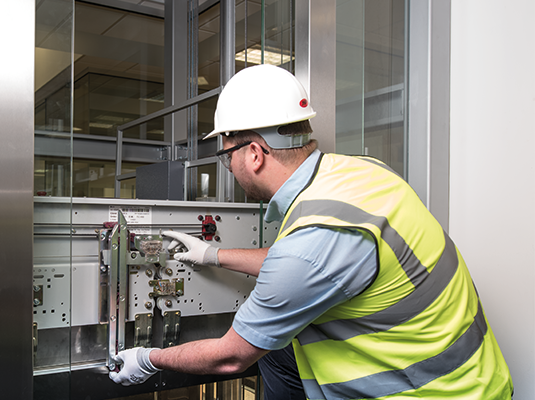Comprehensive Guide to Lift Repair Companies Near Me for Efficient Lift Maintenance
Comprehensive Guide to Lift Equipments and Their Maintenance
Browsing the complex globe of elevator systems and their upkeep is a task that requires accuracy and expertise. From the various kinds of elevator systems in use to the meticulous adherence to safety regulations, the maintenance of these vertical transportation tools is a multifaceted undertaking.
Kinds Of Elevator Equipments
Lift systems can be found in various types, each designed to suit certain structure needs and user requirements. The most common kinds include hydraulic lifts, grip elevators, machine-room-less elevators, and vacuum lifts. Hydraulic lifts are perfect for low-rise structures and utilize a hydraulic piston to move the elevator automobile. Traction lifts, on the other hand, are much more fit for high-rise buildings and use steel ropes and weights to move the auto. Machine-room-less lifts are a space-saving option as they do not call for a different device room for the lift equipment. Vacuum cleaner elevators, a more modern innovation, use atmospheric pressure differentials to relocate the automobile within a transparent tube.
Each type of lift system has its very own advantages and downsides, making it essential for building owners and developers to carefully consider their particular requirements before selecting the most ideal alternative. Variables such as developing elevation, area schedule, power effectiveness, and budget restraints all play a significant function in figuring out the very best elevator system for a certain building.
Usual Upkeep Concerns
Normal upkeep of lift systems is vital to make certain smooth operation and lengthen their lifespan. Despite routine maintenance, lift systems can still experience usual upkeep issues that need to be without delay addressed to prevent interruptions in solution. Regular assessments and aggressive upkeep can aid determine and settle these common upkeep issues before they intensify and affect the general efficiency of the elevator system.
Safety And Security Regulations and Conformity
Following strict security policies and guaranteeing compliance with market requirements are paramount for keeping the operational stability of lift systems. Lifts go through an extensive collection of safety regulations to guard passengers, upkeep employees, and the public. Regulative bodies such as the Occupational Security and Health And Wellness Administration (OSHA) in the USA and the European Lift Organization (ELA) in Europe develop guidelines that cover different elements of lift style, operation, installation, and upkeep.
Compliance with these policies is not just a legal demand but likewise an ethical commitment for building proprietors and lift maintenance firms. Failure to meet safety and security standards can lead to penalties, lawful obligations, and, most significantly, jeopardize the safety and security of people utilizing the lift. Routine assessments, upkeep checks, and adherence to security procedures laid out in the regulations are important to make sure the risk-free and reliable operation of lift systems. By prioritizing safety and security policies and conformity, stakeholders can maintain the trust fund of the public and reduce possible dangers related to elevator use.
Ideal Practices for Maintenance

Structure owners ought to also think about investing in modernization upgrades to boost the performance and safety and security of their lift systems. By adhering to these ideal practices, elevator systems can run efficiently and securely, providing trustworthy upright transportation for passengers.

Advanced Technologies for Effectiveness
Carrying out innovative modern technologies in elevator systems can considerably boost functional effectiveness and review traveler experience. lift engineer course. Among the key advancements in lift innovation is the introduction of location control systems. These systems enable travelers to input their preferred floor prior to going into the lift, which then directs them to one of the most effective vehicle. By decreasing unnecessary quits and optimizing travel paths, destination control systems decrease wait times and blockage in high-traffic structures.
Moreover, the integration of clever sensing units and predictive upkeep abilities has actually transformed lift maintenance. These sensing units can spot potential concerns prior to they intensify, enabling positive maintenance treatments and reducing downtime. Additionally, making use of regenerative drives and energy-efficient components helps in reducing power usage and operating prices in elevator systems.
Furthermore, the execution of cloud-based monitoring and remote diagnostics enables real-time monitoring of elevator performance and immediate troubleshooting of any kind of malfunctions. This proactive method not only improves system reliability but additionally improves the total individual experience by ensuring nonstop and smooth elevator procedures.
Verdict
To conclude, recognizing the various types of lift systems, typical maintenance problems, safety laws, finest maintenance techniques, and progressed modern technologies for efficiency is vital for making certain the smooth operation of elevators. By adhering to safety regulations and implementing finest methods for maintenance, building proprietors can extend the life expectancy of their elevator systems and make sure the safety of passengers. It is very important to remain updated on the most recent advancements in elevator technology to enhance effectiveness and reliability.
The most typical types include hydraulic elevators, traction elevators, machine-room-less elevators, and vacuum elevators. Hydraulic elevators are perfect for low-rise buildings and make use of a hydraulic piston to relocate the elevator automobile. Machine-room-less lifts are a space-saving option as they do not need a separate maker over here room for the elevator equipment. Normal inspections and proactive upkeep can help identify and solve these typical upkeep concerns prior to they escalate and impact the total performance of the elevator anchor system.
